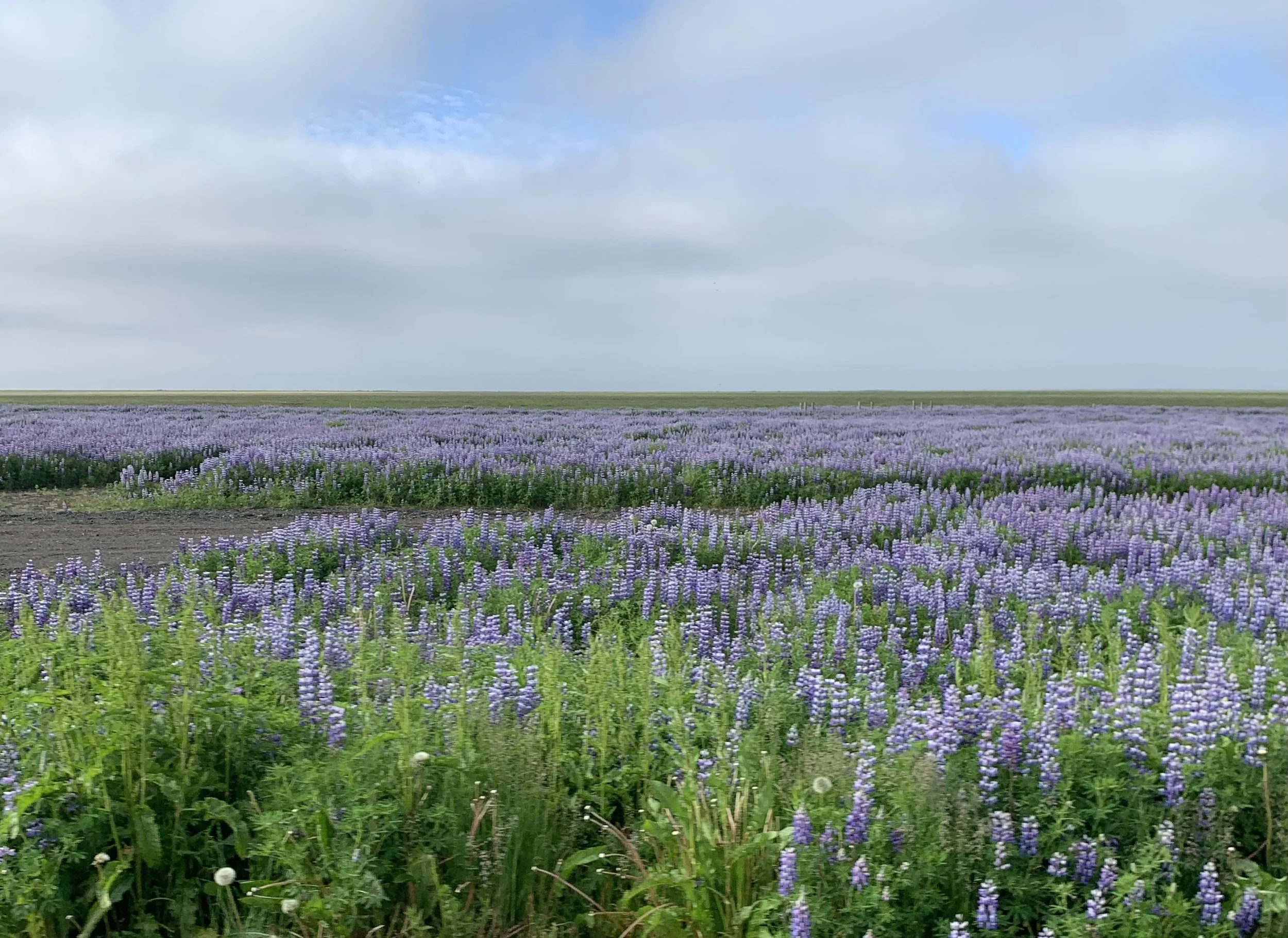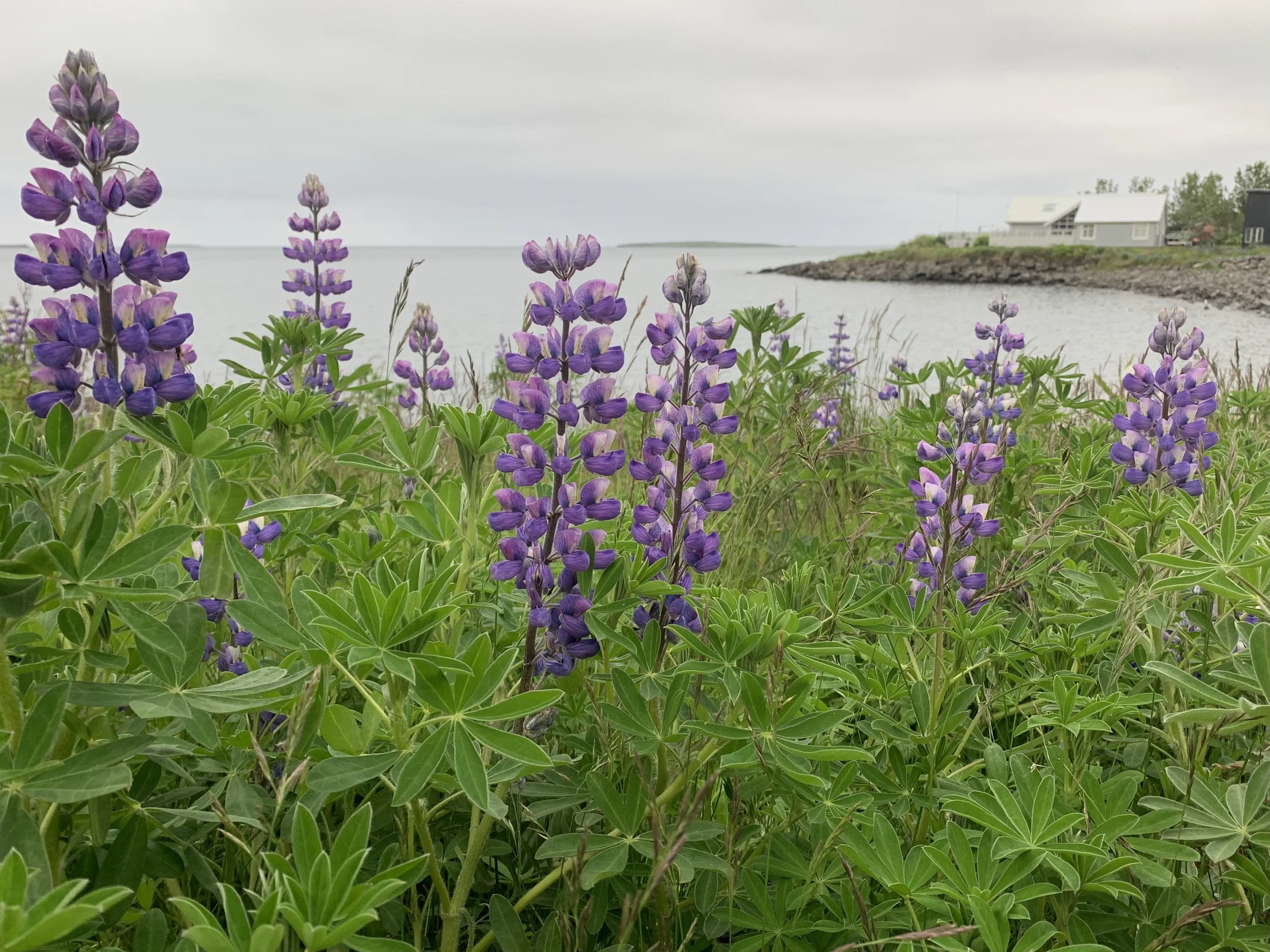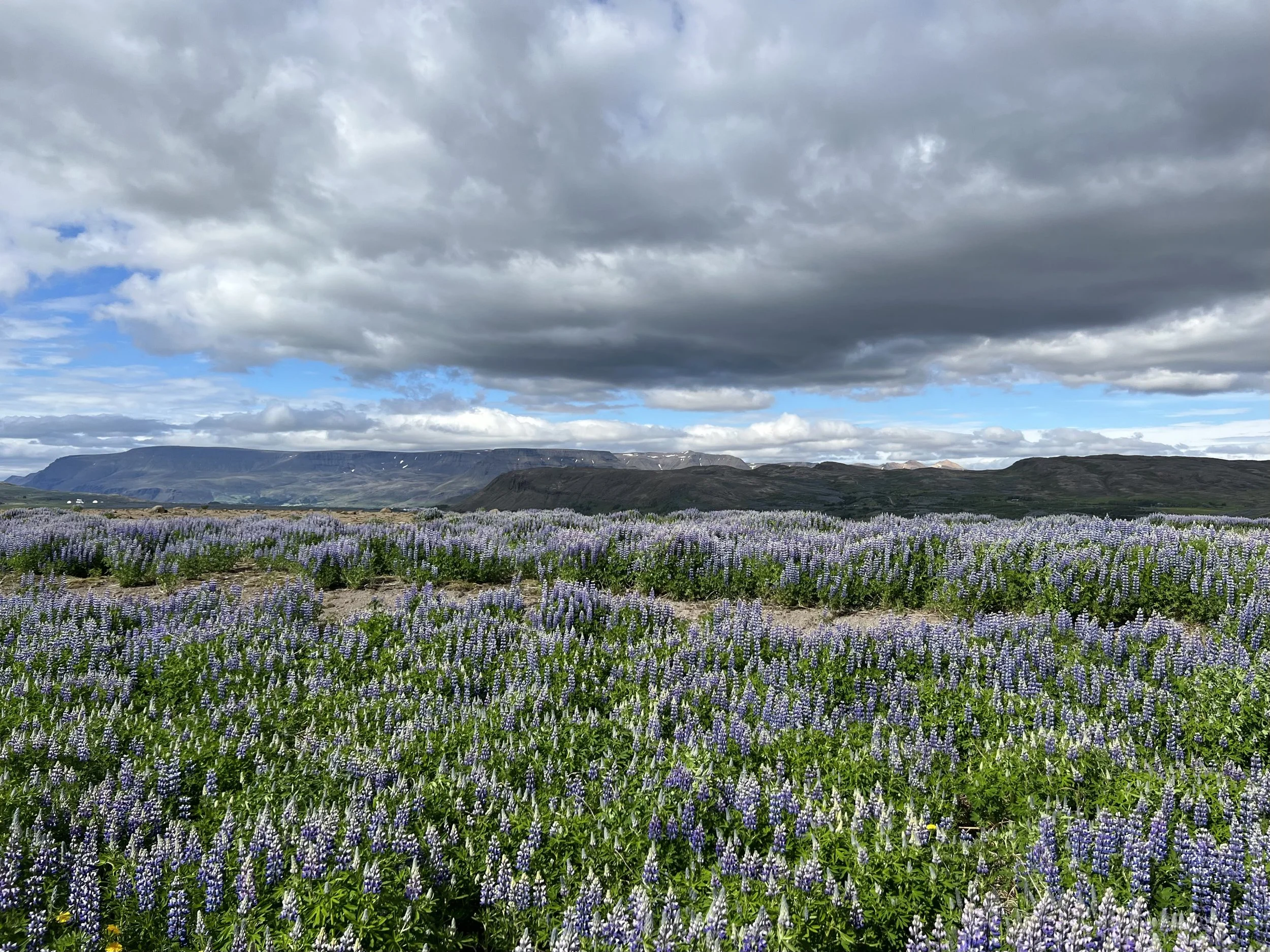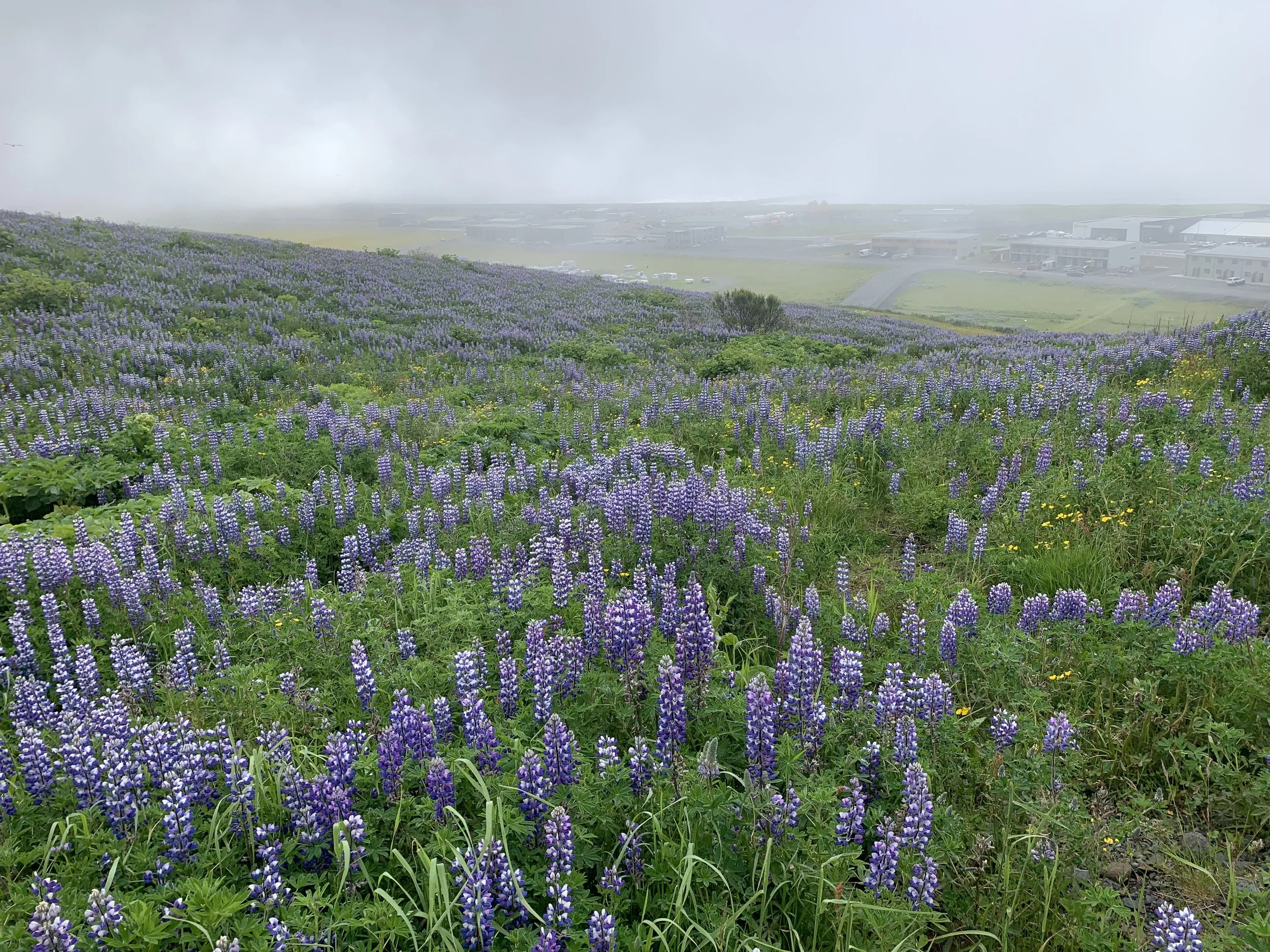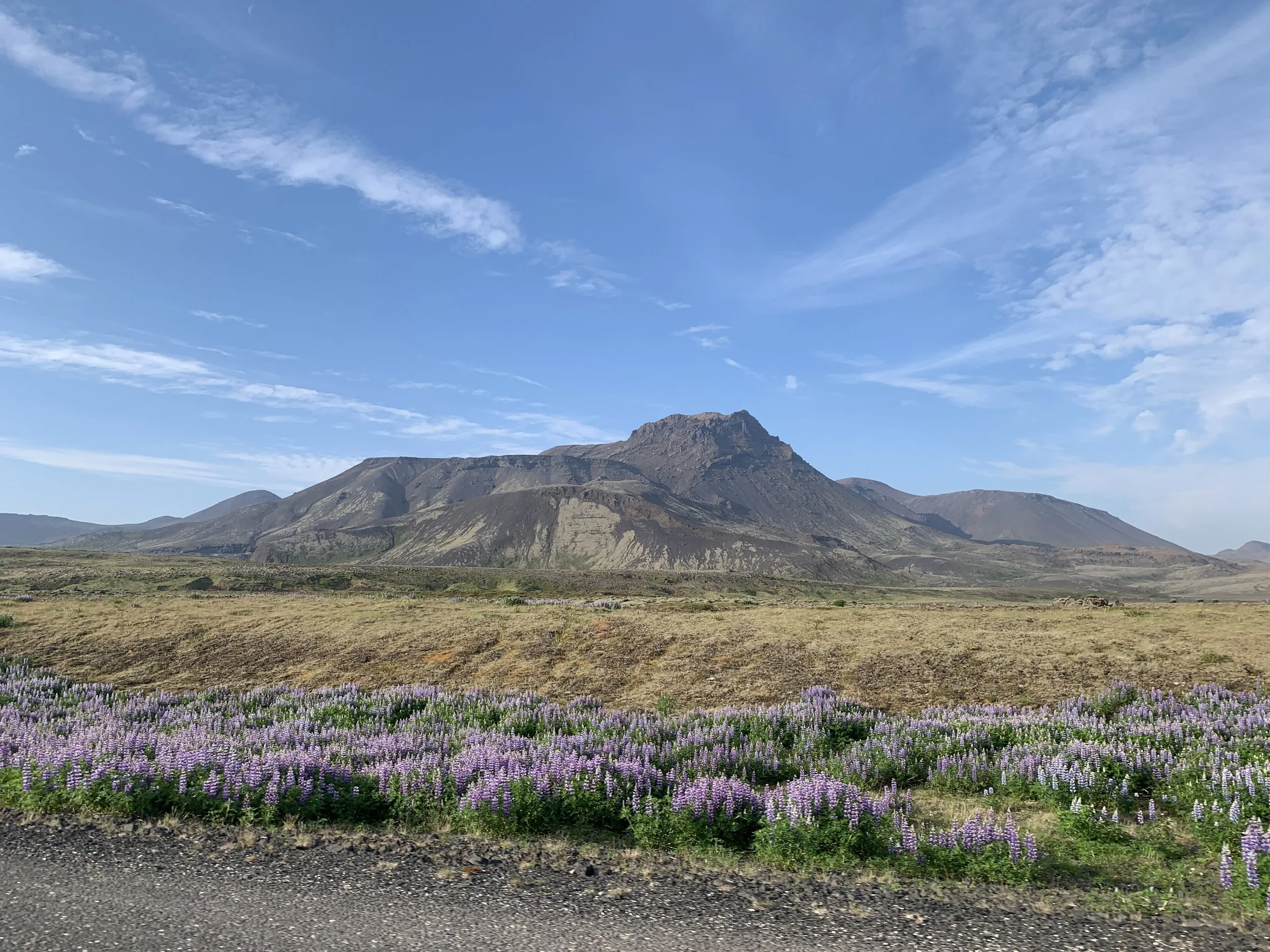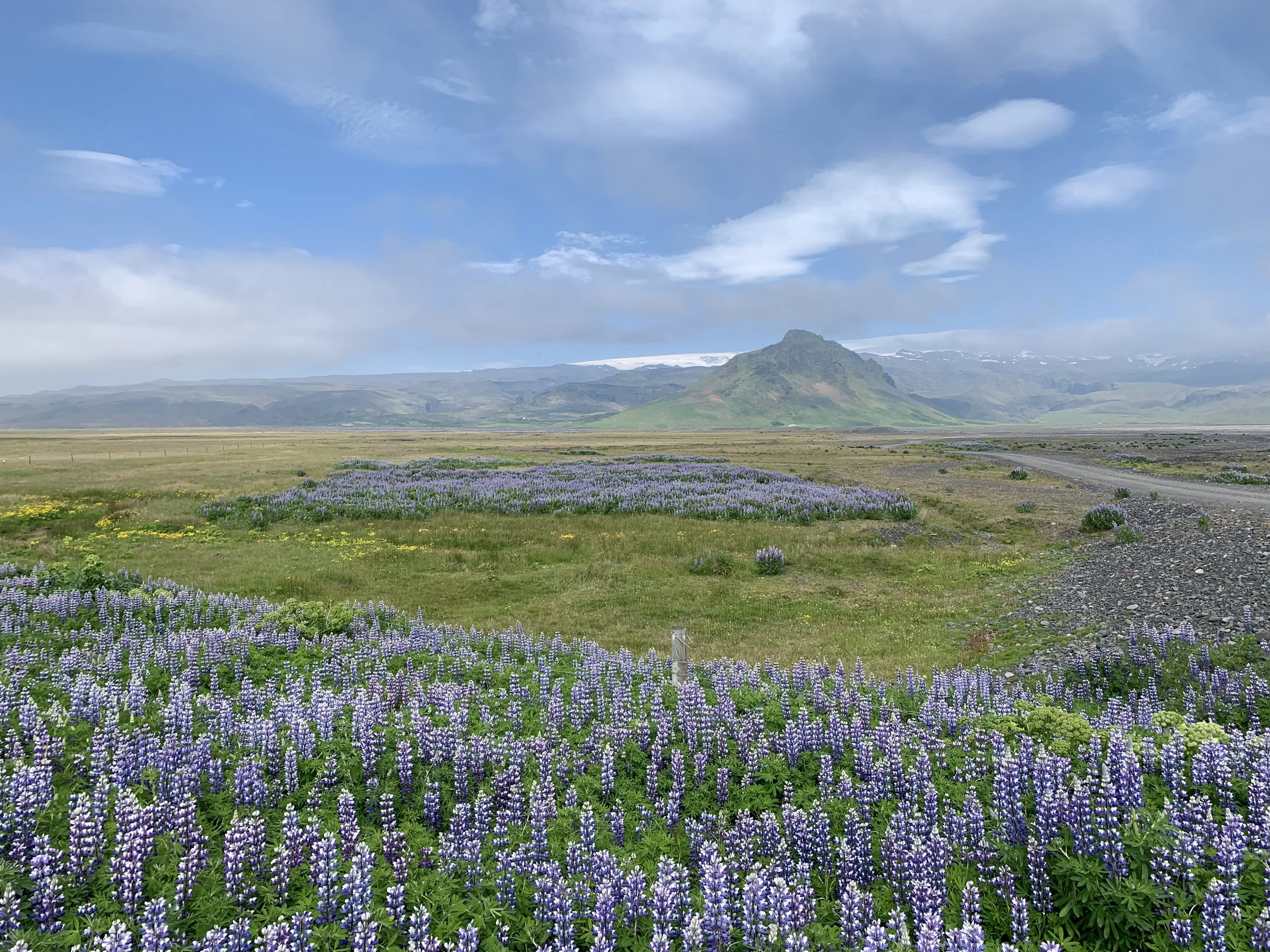Purple haze - the lupins are back!
Wild lupins growing on the south coast
I think my favourite month of all in Iceland is June. The days are at their longest, the weather is sunny, banishing the memories of the cold dark winter, the landscapes are green and the lupins are in bloom. Lupins have long been a flower I loved and one that I have many times tried to grow in my garden with very limited success as we get lots of slugs - and lupins and delphiniums are some of their favourite plants. I have lost count of the times I’ve tried to grow them and gone out in the morning to find nothing but a few ragged green stumps in the soil where the day before had been pretty plants. So imagine my joy when I discovered that in Iceland they grow wild - and they are everywhere! Even in the industrial areas of Reykjavík the roundabouts, grass verges and sliproads are often a riot of bluey purple, and it always lifts my mood to see them. Although the Icelandic name for the plant is Lúpína, they also have their own special name for it, which is Úlfabaunir, which literally means ‘Wolf Beans.’
Lupins on the edge of Reykjavík bay
The kind of Lupin that grows in Iceland is the Alaskan Lupin (Lupinus Nootkatensis). Every single Lupin plant in the country is apparently here because of one person. In 1945, a committee was set up to revegetate areas of Iceland. A representative of the committee, Hákon Bjarnason, took a trip to Alaska to select plants he thought would do well in the harsh Icelandic landscape. He returned in November with his collection of seeds. The lupin was seen as a means of adding nitrogen to the soil, providing nourishment for the plants that follow. Soil that is barren and exhausted can in a short time be transformed without the use of fertilisers to create a rich area where other plants and trees can grow. Given the scarcity of trees in Iceland, this has enabled reforestation in many areas.
Lupins thrive in poor soil conditions, enriching it with the nitrogen it releases
However, the lupin is fairly unique in that it thrives in poor conditions and it has flourished so well that in many places it has spread like wildfire and critics view it as a highly invasive plant that is threatening low-growing mosses, lichens and other native plants. Apparently, over a 15-year period, the plant has spread up to 35-fold in parts of eastern Iceland, mostly on land that was already vegetated with native flora. As one resident said “Look down in the middle of a lupin field and you won’t even see the ground, the flower bed is so thick. Crowberries and blueberries and dryas—they’re gone.” And so, armed with grass trimmers, communities in Iceland are joining forces to beat back the invaders. They cut the lupins at the beginning of summer, before the plant forms seeds and when the root is likely to die from trimming. In previous summers, three towns in eastern Iceland have loaned out grass trimmers to anyone who wished to partake in the killing spree, planning to do this each year until the lupins have gone.
Pest or beauty? Looking down towards Vík through a haze of purple
However, in the right place, these plants can clearly do much good. The ideal areas for encouraging lupins are damaged coastal areas with natural borders like mountains and rivers. There, the positive effects can be both short and long term: preventing sandstorms and creating soil for reforestation. Near the Hekla volcano, where frequent eruptions over the centuries have destroyed a vast birch tree forest, the Soil Conservation Agency has successfully resurrected parts of the forest with lupin magic. Using native plants and fertilizers would have been much slower and more expensive. There are also some coastal roads that regularly used to have to be closed due to sandstorms caused by the wind whipping up sand from the eroded soil, and here the lupins have eradicated the problem, enabling roads to stay open, as well as enriching the soil and stopping further erosion.
They often grow along the roadside as they have here
As a result of all this the Icelanders are incredibly divided over the lupins, everyone has an opinion, often passionately held, and these pretty blue flowers are either loved or hated.
Although I can see both sides of the argument, I have to say I adore these gorgeous flowers. For the two months or so that they bloom they transform the landscape, creating glorious carpets of purple. Summer in Iceland is an incredibly magical time, and these wildflowers, or weeds, whatever you choose to call them, make this already incredible scenery look like something from a fantasy or a fairy tale. A photographer’s dream, the vast swathes of purple and green do what seemed impossible - making the stunning Icelandic landscape look even more beautiful!
